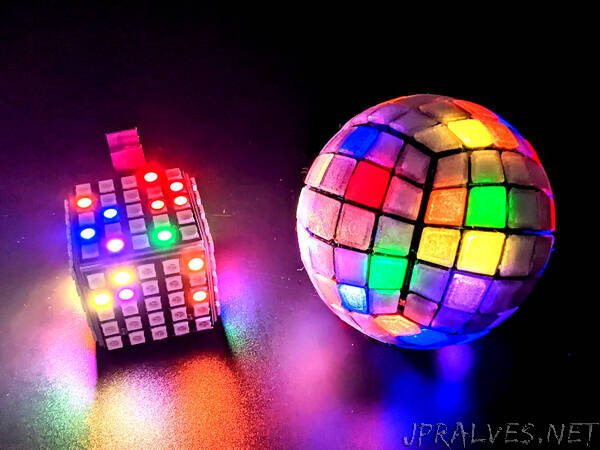
“What’s better than a cube of 150 LED pixels? Why, a sphere of 150 LED pixels!
“Squaring the circle” is a mathematical challenge as old as geometry itself. The “Cube Orb” LED sphere inverts that goal and takes it to a new dimension. Notably, this spectacular project achieves its orbicular objective using only standard, easy to ORB-tain electronic components and 3D-printed parts.
Ever since I saw Jiri Praus’ fantastic freeform-soldered LED sphere, I’d wanted to create my own version. All the documented LED sphere projects I found required custom PCBs or tricky structural soldering. I wanted a simpler build. I knew I could construct an addressable LED cube from prefabricated WS2812B matrices and wondered if an LED cube could be transformed into a less edgy, better-rounded structure.
Inspiration arrived via a short blog post about computer graphics image mapping. When projecting 2D images from the surface of a cube to a sphere, graphics algorithms often use quadrilateralized spherical cube or quad sphere geometry, which splits a sphere into six identical faces bounded by arcs from great circles (circles defining equal hemispheres), then subdivides each curved face with great circles spaced at equal angles. A quad sphere’s pieces are reasonably regular in shape and size, unlike a traditional “globe” subdivision using lines of latitude and longitude, which produces pointy triangles near the poles.
Newly motivated, I set about designing a 3D printable shell to transfer light from an LED cube to a circumscribed quad sphere. Many hours later, I’d designed and printed a six-piece spherical shell from transparent filament. That first build carried light nicely, but “bled” colors between LEDs, resulting in blurry patterns at the sphere’s surface. ORB-viously, more experimentation was needed.”
